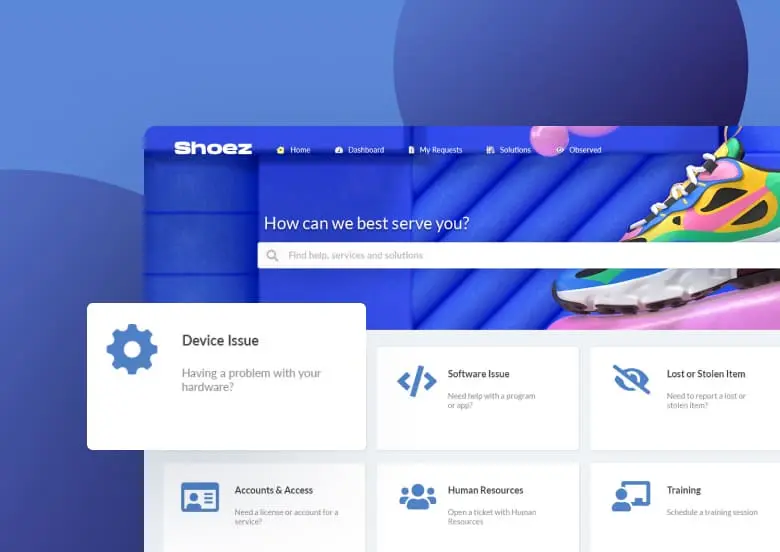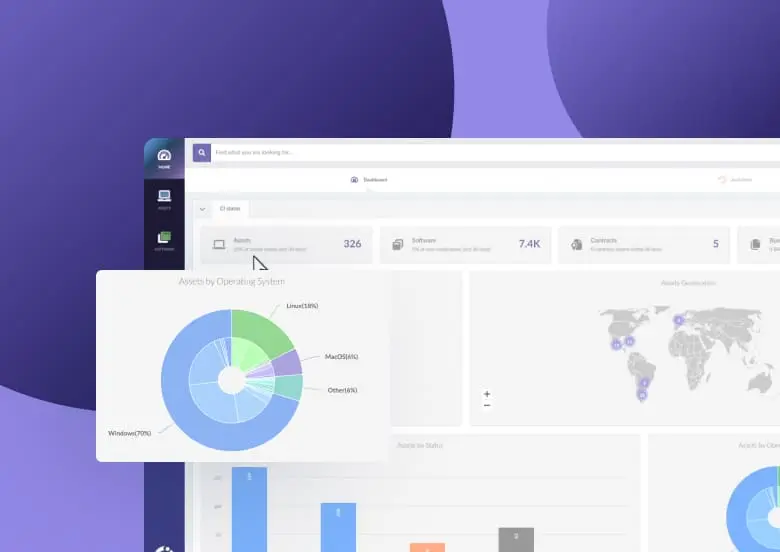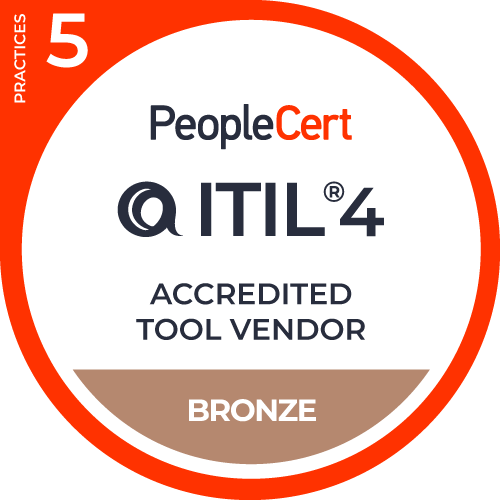Service Level Agreements (SLAs) are a crucial part of Service Level Management, and therefore one of the key components of IT service management. They are the basis for building and delivering IT services, and play a key role in ensuring that both the client and the service provider are on the same page and that the service delivery is at par with or exceeds customer expectations.
In this article, we’ll cover every aspect of SLAs: what they are, their components, and advantages and disadvantages, as well as some of the commonly asked questions about SLAs.
If you are managing service delivery in your organization, check how InvGate Service Management can support on accountability and SLA tracking within the solution.
What are SLAs?
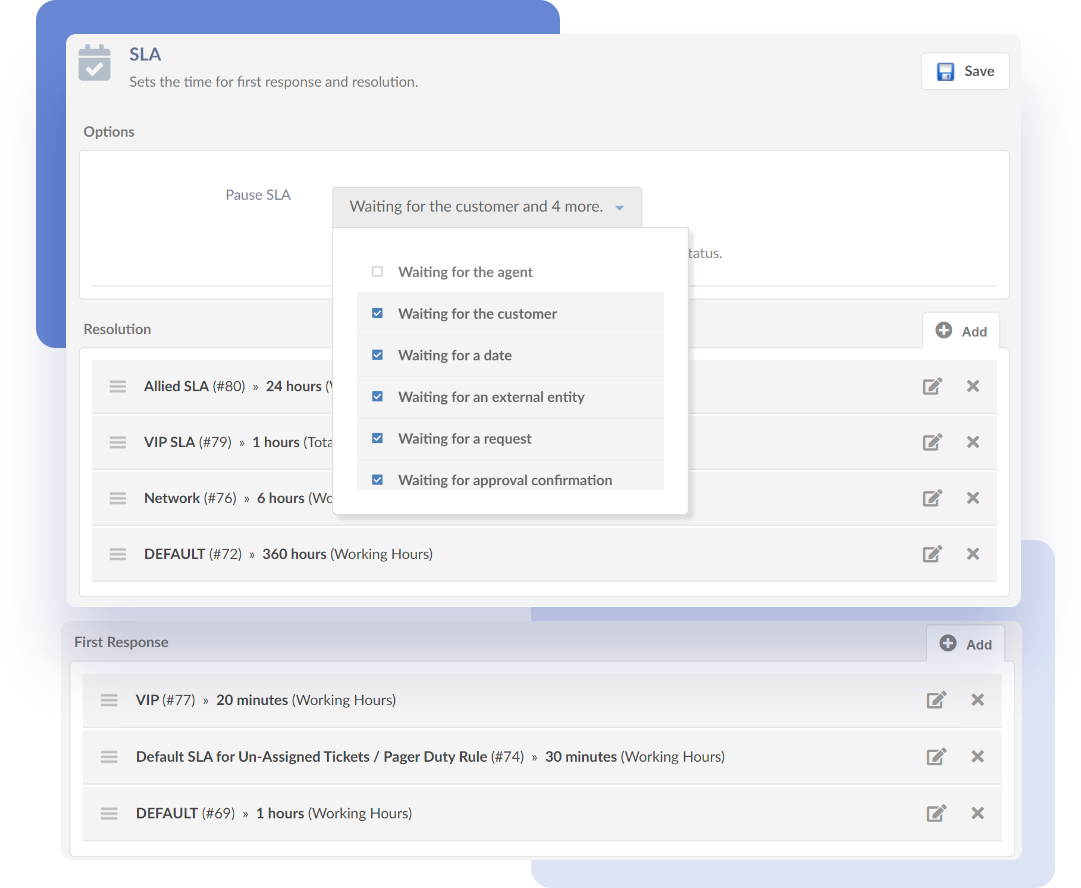
SLAs are essentially a contract between a service provider and a client. They detail the nature of services that will be provided and their quality and performance metrics. They were used by telecom operators and internet service providers, and are now employed by companies and organizations in many industries.
SLAs can be between more than two parties and different departments or units in an organization. Though their main goal is to align the services provided with those required by the client, they can be legally binding. In fact, they also contain measures to be initiated in case the service provider could not deliver the services or meet the specified quality requirements.
A service level agreement usually describes the parties involved, the nature of service rendered, quality or performance metrics for the services, how and when the contract may be terminated, and, as mentioned above, how to fix issues with service quality.
For example, most cloud service providers often 99.99% (often referred to as four nines) or even 99.999% uptime for their services in their SLAs. And if they fail to deliver on it, they’ll give service credits (points that can be redeemed for cloud services).
Why is Service Level Agreement important?
SLAs ensure that both clients and the service providers understand the exact nature and quality of service to be rendered.
From a client’s perspective, an SLA guarantees that the requested services will be delivered; it assures the client that they will fit their requirements. The SLA dictates the standards for every service provided and how these standards will be measured.
From a service provider perspective, the SLA ensures clear communication between them and the client. It removes (to a large extent) ambiguity between client expectations and what the service provider understood. It reduces the possibility of a dispute over services delivered, and if a conflict does occur, the SLA offers remedial mechanisms.
The document also dictates the deliverables from the client’s end as well. It dictates the elements or resources, such as different documents, access credentials, information, and other resources the service provider may need to deliver the services.
Another benefit is that the SLA standardizes the processes for the service provider. Every client may have different requirements, but with carefully documented SLAs, they can align client requirements with the organization’s operations. An SLA helps service providers organize resources efficiently.
What does an SLA include?
As you can imagine, the exact components of a service level agreement may vary between service providers, industries, and the clients' specific requirements. And there are many guidelines on how to build an SLA.
That said, most of them follow a general pattern. These are the six main aspects of an SLA:
- A description of the services
- The service levels for each of them
- How the services will be monitored and assessed
- Service management
- Remedial measures in case the provider was unable to meet the specified levels
- When and how the SLA may be terminated or renewed
Besides these components, customers or service providers may add additional elements, such as the goals of the parties involved (for a general good faith interpretation of the SLA) or situations in which the SLA doesn’t apply or is wholly voided.
Let's take a closer look at each of them.
1. Description of the services
There are different types of services that the provider delivers. These could include cloud services, product development, support, and IT maintenance. They might consist of one service or a combination of services.
2. Service levels
The service levels dictate the performance or quality metrics for the services delivered. The goal of defining these service levels is to remove any ambiguity or miscommunication on what the expected quality of service is.
For example, in the case of cloud service, 99.99% availability may seem good for a layperson, but this translates to 3.65 days of unavailability in a year.
By defining the service levels, the SLA brings the service provider on the same page on what good quality service means. These service-level metrics could be MTTR, MMTF, FCR, and other KPIs that may translate to availability, reliability, security, and other factors.
3. Service level monitoring and reporting
This dictates how the processes will be monitored and reported to see how far the service provider meets the defined service levels. The SLA may define the tools, format, or even third-party services used to monitor the service levels. It may also determine how often the reports may be reviewed.
4. Service management
Service management discusses how service requests will be handled and the processes involved. It also discusses how different IT processes will be carried out, the disaster recovery and business continuity plan, cybersecurity strategy, and other aspects of delivering and maintaining the services.
5. Remedial measures if the SLA requirements are not met
Remedial measures are another assurance to the client that the requirements will be met. In most cases, this is in the form of service credits.
The SLA may place different levels of importance on additional services and offer higher or lower credits for missing those service levels.
The goal of these service credits is not so that the client has to pay less for the services but rather to highlight the importance of the different services.
6. Termination and renewal
The SLA will specify how long it is valid and how often it may be renewed. It may also determine how the SLA may be terminated before the end of the service date, the conditions for the same, and how both parties will respond to it. It may specify a notice period from all parties.
The types of SLAs explained
Service level agreements can be classified mainly into external and internal SLAs.
External Service Level Agreement
When people talk about service level agreements, this is what they’re referring to most of the time. A customer service level agreement is between a client and a service provider such as a software vendor and customer, an IT service provider and a client, among many others.
Internal Service Level Agreement
An internal service level agreement is between two different departments in an organization. This could be between the IT department and the HR department offering assistance with employee onboarding or between the sales and marketing department with the customer care department.
These service level agreements are more for clear communication and understanding and less about ramifications in case the requirements are unmet. The internal SLAs will indeed contain service level targets and dictate monitoring and reporting.
These SLAs can also be classified into three categories based on how they are structured.
Customer-based SLA
A customer-based SLA is between an individual customer or a group of customers and a service provider. These SLAs are designed around all the services rendered to the group of customers.
Service-based SLAs
A service-based SLA revolves around a specific service. They are not unique to a customer or a group of customers but are typical for all the customers who avail of the particular service.
Multi-level service agreement
Multi-level SLAs may involve more than one service provider and different sets of customers. The levels can be:
- Corporate-level SLA
- Customer-level SLA
- Service-level SLA
A corporate-level SLA applies to organizations and the customers who avail of specific services. A service-level SLA may apply to organizations and customers benefitting from particular services.
Multilevel service level SLAs are used in large organizations that may offer many different services to customers and standardize the SLAs for other customers.
A SaaS company offering different services may have an individual plan, a team plan that supports ten users, and an enterprise plan that supports more than 100 users. A corporate-level SLA may have conditions that prohibit users from selling the services to other users or copying the UI of the solution. For users on different plans, separate SLAs may dictate conditions for availability.
Best practices of service level agreements
No single SLA template works for all, but here are some best practices you can follow while creating an ITSM SLA.
1. Make your SLAs SMART
SMART means Specific, Measurable, Attainable, Relevant, and Time-bound. So, ensure the SLA has concrete goals, not vague or subjective statements. If the service provider has met the objectives of the SLA, it should be possible to measure performance. You want to ensure that the SLAs help your business grow.
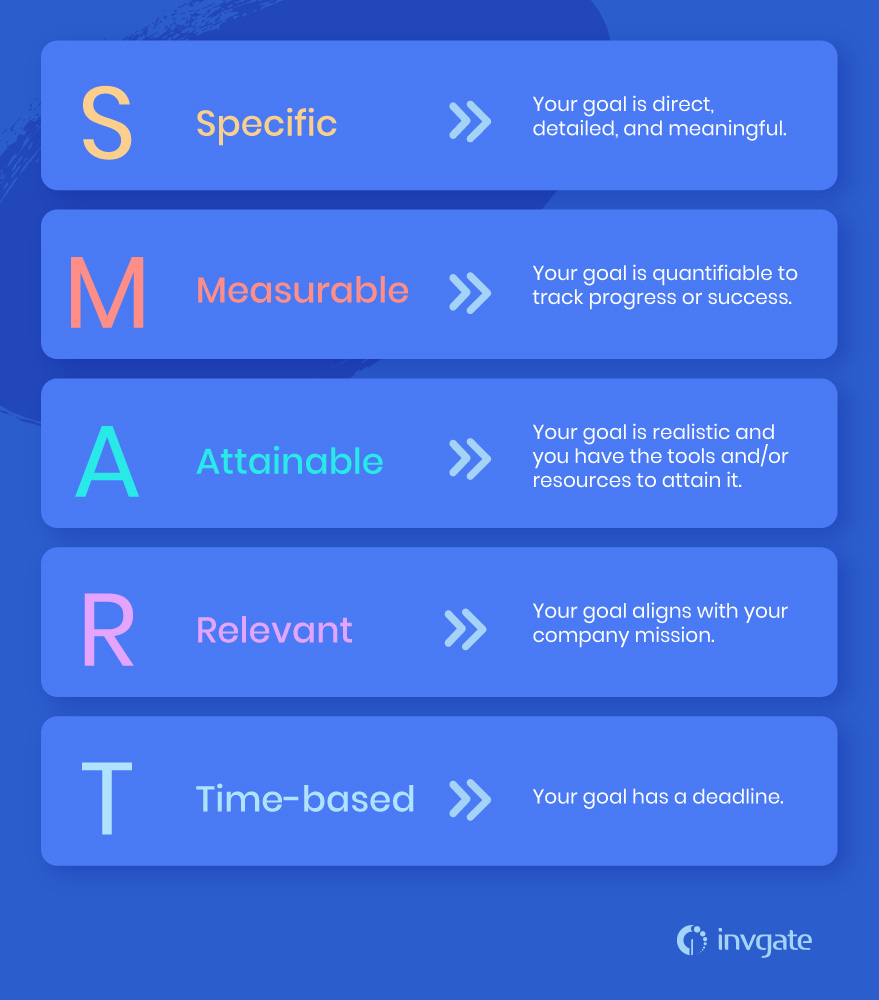
2. Keep it simple
Don’t overcomplicate SLAs unnecessarily. Use plain language and avoid jargon. Simple SLAs are understood and referred to; complicated SLAs create confusion and are left behind.
3. Align metrics with business objectives and goals
Don’t make a watermelon out of your SLAs — all green on the outside and red on the inside. Service providers and clients often use metrics that sound great on the technical side but don’t align with the business goals. All the metrics are ideal, but the client experience is abysmal.
For example, imagine a service provider hosting a website for a client. The SLA mention 99.99% availability, and the provider have exceeded it for a given month. But the website is super slow, and the client is losing customers.
You’ll also have to be careful with service credits in the SLAs. They must incentivize the provider to meet the service requirements and highlight its essential aspects. The threshold should be set considering the provider’s capabilities and client requirements. Nobody wants a situation where the service provider considers missing targets and charges a premium to cover the service credits.
4. Review and renew as needed
Don’t build a service level agreement and keep it the same throughout the relationship with the client. Review and renew the SLAs whenever the requirements or services are changed besides the periodic renewals.
5. Don’t go for one single SLA for all of your services and customer types
Different services have different specifications, and customers have different requirements. You need other metrics for various services. While you can keep a general SLA template, you must tailor it for individual requirements. You don’t want to use the same SLA for cloud services and IT support.
You’ll also need separate SLAs for separate groups of customers, if not individual customers. Small organizations may not be able to afford or even need the service levels that large organizations will need.
If your business offers multiple services or serves various types of customers, developing multi-level service agreements may be a good idea. With this, you can standardize these to a large extent and customize them as needed.
The two disadvantages of SLAs
While SLAs continue to help organizations deliver IT services aligned with their customers' needs, they have a couple of drawbacks. Here are two of them that showcase how SLAs require a reasonable faith interpretation to work, which sometimes makes them less effective.
SLAs don’t often cover the full picture
While we can go into detail about the services required and their expectations, they often end up not being exactly what the client wanted, even when the service provider has hit all the marks.
For example, consider an app that meets all the availability criteria, but the time it goes down is during peak usage hours. Or an e-commerce platform that can handle peak loads and meets all the requirements in the SLA, but customers keep abandoning their cart right before checkout.
We can keep developing more detailed requirements and align our metrics better, but SLAs often tend to focus on the technical aspects.
For this reason, experts have suggested focusing on XLAs or Experience Level Agreements, not as an alternative but to augment the SLAs. They bring the “voice of the customer” into service management.
"XLAs do not replace SLAs. XLAs work hand in hand, they augment SLAs. [...] Whatever you learn is most important to people and impacting their overall sentiment is going to be in your XLA.
And then you still have your operational metrics. But one big piece to that is it now elevates, like you can have all these silos, and you can have all these efficiency metrics within. However, now let's elevate it to a higher level and let's all know how we're actually impacting that end-to-end experience. And that's where the XLAs come in and give you visibility to that.
And a lot of times it changes how many SLAs you have or what's on your SLAs. It's the new evolution of
hearing the service experience. We can still keep our blessed SLAs and track service levels. [...] But we're going to supplement them. We're going to start listening to number one, what the customers actually care about, what they value, and then you can start measuring that because that's what's important to them."- Rae Ann Bruno (ITIL, metrics, and processes trainer and consultant) on Episode 4 of Ticket Volume Podcast.
SLAs can create unintended motivations from the service provider
From a client perspective, the SLA's goal is to guarantee service delivery at targeted service levels. And they define the service levels and penalties to reflect this. The penalties are often monetary, so the service provider will be incentivized to prevent loss. This is how the mechanism works, but it can have unintended consequences.
For example, if the client demands service levels higher than what the provider is capable of, they may simply charge more. They can simply offer the service credits without it affecting their bottom line.
Or consider a situation where a client wants uninterrupted service delivery during peak hours. For this, the client sets a very high service level and huge penalties if the provider fails to meet them. If the service is interrupted, there’s no way the service provider can mitigate their loss. So if the service does fail, the provider has no incentive to get it back up.
Of course, some SLAs include service credit buyback opportunities, in which the provider can reclaim the credits by exceeding or maintaining the service levels. But this strategy undermines the service credit mechanism; clients can afford not to meet the service level requirements.
Examples of service level agreements
Cloud service SLA
Most cloud service providers showcase the SLAs for their cloud services — like Azure or AWS. These SLAs are reasonably simple and easy to understand but are at the same time very specific. And they all have different SLAs for different services.
They usually dictate the availability criteria, the scope of services, the parties involved, and the service credit if the SLA requirements are not met. Since many users with similar needs define their business model, they are standard for almost all users availing of the same plan for the same service.
SaaS SLAs
SLAs between SaaS providers and customers (often referred to as subscription service agreements) are similar to cloud service SLAs in that they apply to the entire customer base, or at least all customers on the same plan.
These SLAs contain commonly seen components, but B2C SaaS companies may not define availability criteria.
Frequently Asked Questions
What is a Service Level Agreement?
A Service Level Agreement or an SLA is a document that dictates the nature of services delivered by service providers and clients. The document dictates the type of services, service levels, and how the service will be provided. They can be between an organization and external customers or between different departments in an organization.
What are the three types of SLAs?
Three different types of SLAs are Customer-based SLAs, Service-based SLAs, and Multi-level SLAs. Customer-based SLAs are defined around a customer or catering to the requirements of a specific group of customers. Service-based SLAs are for all customers receiving a particular service.
Multi-level SLAs usually have multiple levels or parts, each referring to a provider's customers, a specific customer group, and customers receiving certain services. Each level may have different SLAs, and a particular customer may get a combination of SLAs from all the levels.
What are the everyday challenges of maintaining SLAs?
One of the most common challenge is to make SLAs aligned with customer needs and provider capabilities. It is crucial and challenging to design an SLA that motivates the service provider to deliver quality services and prioritize the essential service delivery aspects.
What are the four aspects of an SLA?
The four aspects of an SLA are service delivery, service level metrics, service monitoring, reporting, and remedies and penalties if service levels are not met.
